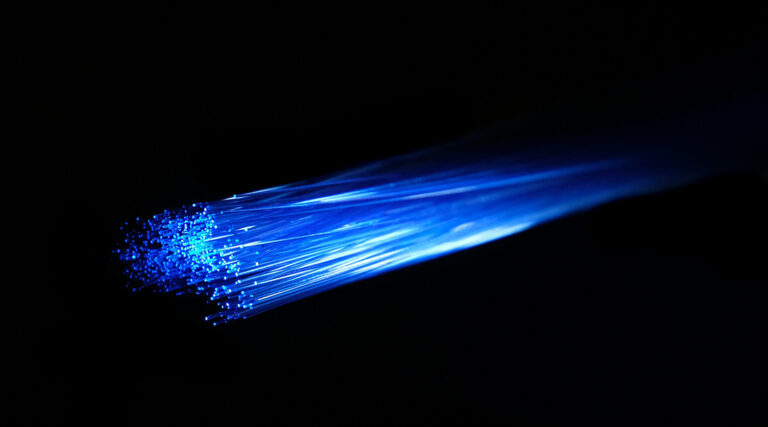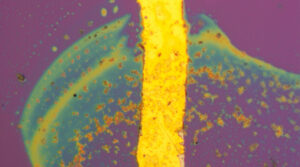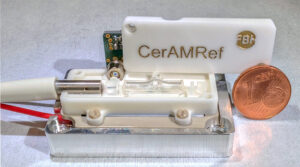Scientists theorize that cosmic strings interacting with dense matter in the early universe provided the seeds for galaxies and black holes.
A new study suggests that supermassive black holes and certain galaxies, whose early existence has long puzzled scientists, may have originated from massive cosmic strings — hypothetical one-dimensional objects in space that may have formed when the early universe went through a phase transition, similar to defects that form in other types of matter during phase changes.
Because of their large mass, such objects could have attracted large amounts of matter, allowing massive cosmic objects to quickly form from or around them.
“Cosmic strings are line-like defects predicted by some elementary particle theories,” said Robert Brandenberger, a professor of physics at McGill University and one of the authors of the study, in an email. “A good analog is defect lines in crystals.”
Many scientists, like Brandenberger, believe that next-generation gravitational wave detectors and other advanced observational tools could be used to test the hypothesis of cosmic strings by finding evidences of their effects on surrounding matter or on space-time itself, which according to Einstein’s general theory of relativity is a dynamic entity.
Solving cosmological problems with cosmic strings
The current leading theory in cosmology, the Standard Cosmological Model, posits that the Universe began from an extremely hot and dense point, known as a singularity. This singularity then expanded and cooled over time, leading to the formation of galaxies, stars, and other cosmic structures as we observe them today.
While this model has helped explain many of our observations, it has its shortcomings. For example, observations from the James Webb Space Telescope have revealed massive galaxies and supermassive black holes that formed just a few hundred million years after the Big Bang. According to the Standard Cosmological Model, there simply shouldn’t have been enough time for such massive structures to form so quickly.
This could mean that there are yet undetected forces in nature that go beyond the Standard Model. One possible theory is that they triggered the formation of gigantic cosmic strings that interacted with the dense matter of the early universe, providing the seeds for galaxy formation or even collapsed into supermassive black holes.
“It turns out that many theories of fields predict the existence of strings,” said Brandenberger. “Some types of string can explain the origin of the supermassive black holes, which have recently been detected. The origin of these black holes is a mystery in the current cosmological paradigm.”
In their study, published in the Journal of Cosmology and Astroparticle Physics, the team conducted a detailed theoretical analysis of how matter that existed at the beginning of the Universe and which might surround these cosmic strings could be gravitationally drawn to them as they grew from microscopic to galactic scales along with the expansion of the Universe..
Understanding this process is crucial for making accurate predictions about how cosmic strings could be shaping our Universe and perhaps uncover new, unknown laws of physics.
How observations will help confirm theory
Fortunately, the imprint of the strings on their surroundings should be detectable with various experimental tools, from gravitational observatories capable of detecting gravitational waves emitted by strings as they oscillate and decay, to optical surveys that scan a wide range of electromagnetic radiation wavelengths.
“Cosmic strings leave behind signals in all observational windows,” said Brandanberger. “We are searching for signals of strings for example in cosmic microwave background anisotropy, in the distribution of galaxies, and other types of radiation. As our surveys improve, we will either see strings or establish new upper bounds on the energy scale of these strings. One of the beauties of working in this area is that we can draw important conclusions independent of whether we detect a string or fail to do so.”
These observations are crucial because the tension (and thus the energy) of cosmic strings is not known and different theories give varying predictions about its value. The details of how matter is drawn to these hypothetical cosmic objects, leading to either their collapse into black holes or the formation of galaxies around them, depend heavily on this fundamental quantity. Once this tension is measured, it will allow scientists to paint a complete picture of the strings’ evolution, providing insights into some of the universe’s most perplexing phenomena.
However, it is important to remember that the very existence of cosmic strings is a hypothesis, and not all researchers are convinced. This is why experimental tests will prove important, and may be possible in the near future thanks to the development of increasingly precise instruments.
The scientists behind the study believe that with their help, it will be possible to prove (or perhaps even disprove) the existence of cosmic strings, or at least to set stringer constraints on the possible value of their tension, to answer long-standing questions about the origin of supermassive black holes and galaxies that the Standard Model cannot explain.
“There are exciting new observational windows opening up, and we are gearing up to make predictions for what signals the cosmic string would predict,” Brandenberger concluded.
As these advanced technologies come online, the possibility of detecting these cosmic strings becomes more realistic, offering the potential to revolutionize our understanding of the universe’s earliest moments and the formation of some of its most massive and enigmatic structures.
Reference: Hao Jiao, Bryce Cyr, and Robert Brandenberger, Accretion onto oscillating cosmic string loops, Journal of Cosmology and Astroparticle Physics (2024). DOI: 10.1088/1475-7516/2024/07/069
Feature image credit: Adrien Converse on Unsplash












+ There are no comments
Add yours